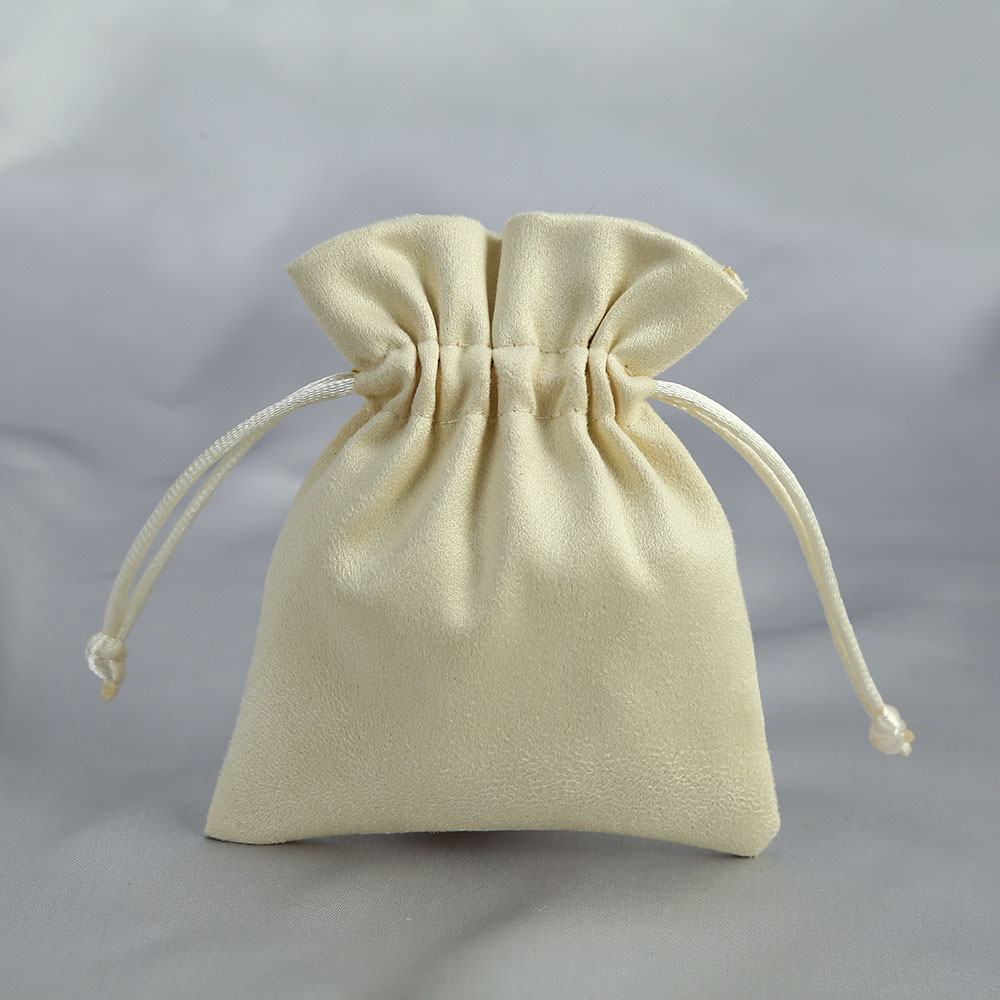Jewelry Drawstring Bag Design Guide: Practical Techniques for Balancing Protection and Aesthetics
In the jewelry industry's value chain, drawstring bags are often regarded as minor accessories. However, data reveals their strategic importance: 23% of global jewelry transport damage results from inadequate packaging, while 72% of consumers reuse high-quality pouches for secondary storage. When a gold-inlaid jade pendant worth thousands of dollars is scratched in transit due to cheap packaging, what’s lost is not only product value—but also brand trust. Jewelry packaging today is shifting from passive protection to active value creation, driven by innovations that combine materials science, ergonomics, and consumer psychology. The goal: to create a dynamic system that protects and showcases, all within a compact form.
Material Selection: Safety as the Foundation, Texture as a Bonus
1. Inner Lining
- Prefer short-pile fabric to avoid tangling with necklaces; ideal thickness: 0.5–0.8 mm
- Add an anti-tarnish layer for silver jewelry (cost increase: approx. ¥0.2/unit)
- For summer exports, apply a moisture-resistant coating to reduce mold risk during ocean freight
2. Four-Dimensional Evaluation of Lining Materials
| Indicator |
Testing Method |
Required Standard |
Recommended Supplier |
| Scratch Resistance |
Mohs hardness pencil test |
≥ Grade 3 (for pearl protection) |
Freudenberg (Germany) |
| Static Resistance |
GB/T 12703.1 Standard |
≤ 1.0 kV |
Toray (Japan) |
| Breathability |
ASTM D737 |
3–5 CFM |
3M (USA) |
| pH Stability |
ISO 7879 |
7.0–8.5 (for silver jewelry) |
Clariant (Switzerland) |
3. Outer Fabric
- Matte finishes appear more premium than glossy ones (preferred by 68% of surveyed customers)
- Use contrast-based color pairing: light-colored bags for dark jewelry, and vice versa
- Avoid reflective materials: they can look cheap and are prone to fingerprint smudges
4. Drawstring Details
- Metal cord ends last 3x longer than plastic ones
- Ideal drawstring length: 1.5× bag opening circumference, ensuring a full, secure closure
Structural Design: Small Tweaks, Big Gains
- Scratch Prevention:
- Add a 1 cm seam-free buffer inside the bag opening to prevent metal parts from rubbing against jewelry
- Optimized Display Windows:
- Avoid placing cut-outs near seams; use PET film, which resists scratches better than PVC
- Transport Protection Essentials:
- Reinforce bag corners with stitching and add a thickened base pad (¥0.15 cost increase; 40% damage reduction)
What Export Clients Care About Most
1. Environmental Certifications
- OEKO-TEX certification is essential for the European market
- Use PLA-cotton blends for biodegradable options—balancing cost and performance
2. Cultural Compatibility
- Avoid cross shapes and animal motifs for Middle Eastern clients
- Japanese market prefers minimalist aesthetics (recommended logo size: <3 cm²)
| Region |
Mandatory Certification |
Cultural Taboos |
Logistics Requirements |
| EU |
CE + EPR |
Avoid deep purple (symbol of death) |
Resealable packaging preferred |
| Middle East |
SASO |
No hexagram symbols |
Dustproof sealing design |
| Japan |
PSE mark |
Avoid 4-piece sets (unlucky number) |
Anti-seismic packaging (≥JIS Z0232 rating) |
3. Functional Enhancements
- Anti-theft foil lining (ideal for in-store display)
- Pre-cut hang tag holes to allow easy labeling by clients
Real-World Case Studies
- Case 1: Italian Affordable Luxury Brand
- Pain Point: In-store displays lacked visual appeal
- Solution:
- Magnetic upright display structure (saved 40% of counter space)
- Printed with tactile ink (increased touch engagement by 15 seconds)
- Result: In-store conversion rate increased by 18%
Case 2: Cross-Border E-Commerce Seller
- Pain Point: High international shipping damage rate
- Solution:
- Four-corner air-cushioned design
- Humidity-indicator color-changing labels
- Result: Return rate dropped from 5.7% to 1.2%
Conclusion
The jewelry drawstring bag is fundamentally a medium for risk control and value delivery. Through molecular-level scratch resistance, ergonomic viewing windows, and proactive cultural compliance, packaging becomes an invisible salesperson. Two major trends are reshaping the industry:
Sustainable materials evolving from a conceptual ideal into functional performance
Smart packaging taking on supply chain management roles
When a drawstring bag can simultaneously protect products, convey brand stories, and enable logistics monitoring, its value surpasses mere physical containment. The future of packaging design lies in how comprehensively it responds to pain points throughout the entire product lifecycle.




 We like to do design according to all the customers' requirements, or offer them our new designs. With strong OEM/ODM capabilities, we can fill your sourcing demands.
We like to do design according to all the customers' requirements, or offer them our new designs. With strong OEM/ODM capabilities, we can fill your sourcing demands.